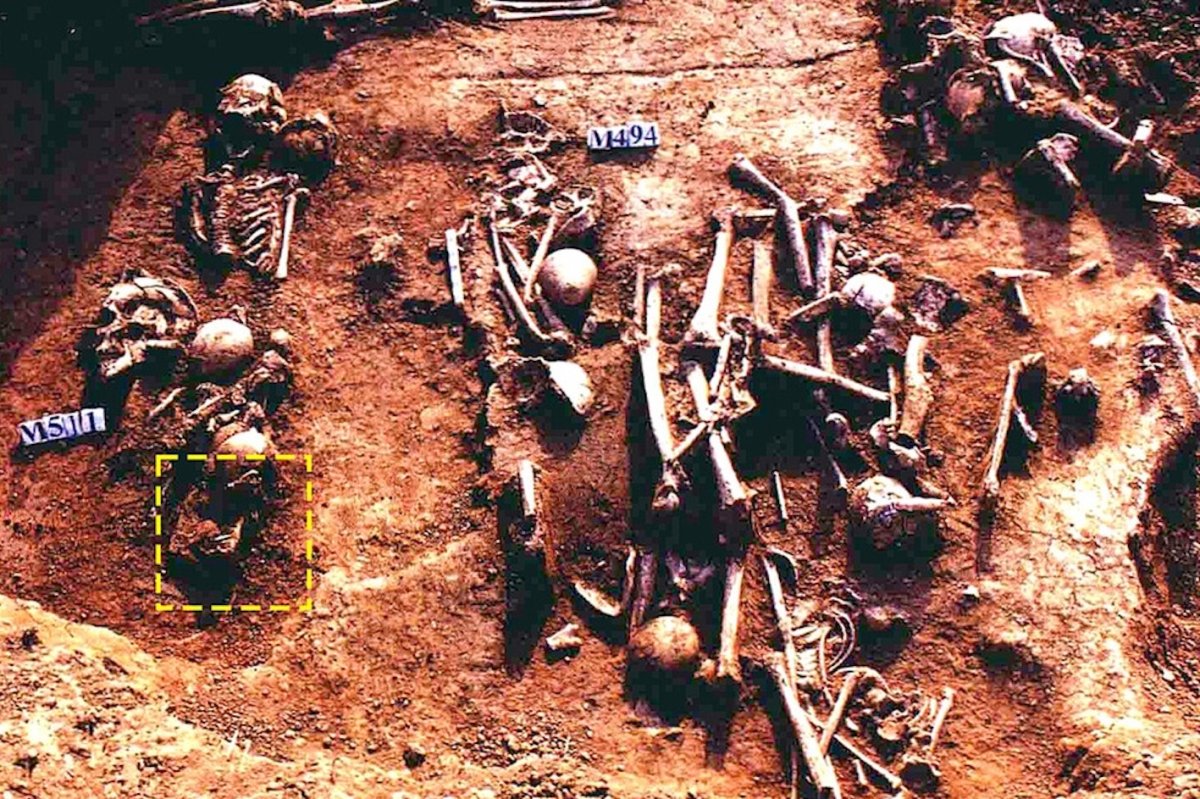Published Jan 03, 2025
By Aristos Georgiou
Science and Health Reporter
NEWSWEEK
Archaeologists have revealed a "unique" prehistoric burial featuring the remains of a child whose skeleton displays evidence of unusual marks on its bones.
The child's remains were discovered at an early Neolithic archaeological site known as Jiahu, in northern China, that dates back to around 7,000-5,000 B.C.
While the modifications remains something of a mystery, the bones may be indicative of burial practices that have previously not been documented in Neolithic China.
The Jiahu site was discovered in the 1960s in the town of Beiwudu in Henan province. It holds great significance for Chinese Neolithic archaeology having yielded important remains over several excavation seasons—including one of the world's oldest fermented beverages and possibly the oldest silk. Archaeologists have also uncovered dozens of human burials at the site.

During a thorough lab analysis of human skeletal remains excavated from the site in 2001, the authors of a study published in the International Journal of Osteoarchaeology noticed an intriguing set of bones.
These bones, which appear to belong to a child who died around the age of 8-10, originated from a multiple burial containing three individuals in total. The child's remains appear to have been placed in the grave in a "concealed" way with various funerary goods, including a bone flute.
The burial, known as M511, is located in a central cluster at the site dating to around 6,000 B.C. This cluster contains distinctive finds and features that were possibly associated with rituals or ritual practitioners, according to the study.
For example, M511 lies in close proximity to two "unique" archaeological features, including a large burial containing at least 23 individuals and a pit containing numerous turtle shell rattles, as well as a fork-shaped bone tool.
"Many burials in this cluster yielded objects such as turtle shells with pebbles inside, handle-shaped stone ornaments, fork-shaped bone tools, and bone flutes that are proposed as ritual paraphernalia," the authors wrote in the study.
Examining the child's bones, the study authors observed numerous modifications—including cut marks, scrape marks and possible chop marks—on the individual's lower limbs that most likely resulted from human activities.
Some of the marks suggests activities that involved the removal of flesh from the child's body, according to the study.
The researchers also observed signs on the bones that the child was suffering from a disease around the time of death—possibly scurvy—or malnutrition.
The context of the burial along with the bone marks and the child's pathological condition are indicative of a ritual setting or a ritual practitioner's burial practices. These practices may have been associated with the child's underlying disease or condition.
For example, the modifications could have been intended to release the child from suffering lower limb pain in the afterlife.
Another possibility is that the marks are indicative of preparation for making bone tools. Similar scrape patterns are found on bone objects.
"The craftspeople might have chosen them based on the quality of the bone material itself rather than exclusively using animal bones. A future re-examination of bone objects at Jiahu may resolve this debate and lead to a new avenue of research," the study authors wrote.
While the intentions of the bone modifications remain uncertain, it is clear that the burial treatment the child received was different to that of other children of the same age interred at the Jiahu site.
"In this rare case, the unique treatment of the diseased child was subtle and hidden," the authors wrote in the study.
According to the researchers, the bones represent the first reported case of human modification on a child's remains from a relatively early time period of Neolithic China.
"Although we may never know the real intention behind the modifications, this child reveals a broader set of mortuary practices than previously discovered in Neolithic China," the authors wrote.
Do you have a tip on a science story that Newsweek should be covering? Do you have a question about archaeology? Let us know via science@newsweek.com.
Reference
Rong, F., Xingtao, W., Juzhong, Z., & Minghui, W. (2024). An "Invisible" Child—A Case of a Child With Anthropogenic Modification Marks and Pathological Conditions in Early Neolithic China. International Journal of Osteoarchaeology. https://doi.org/10.1002/oa.3368














